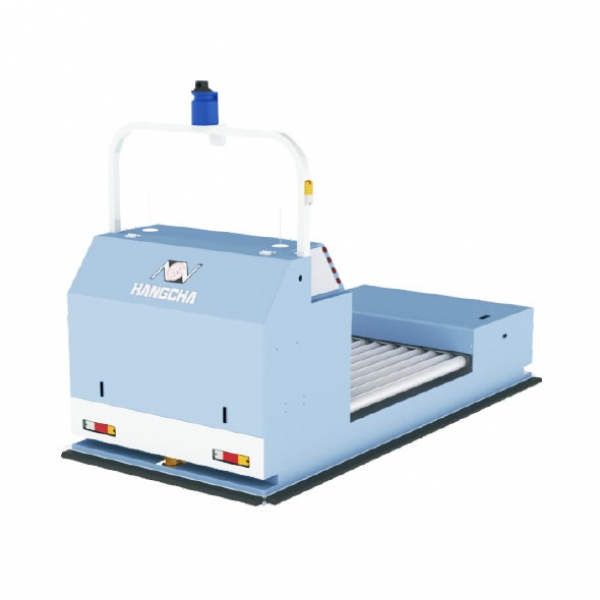Transplanting pattern AGV
1. Trackless operation, the driving path is flexible and changeable, suitable for a variety of on-site environments. The route change can be completed without external construction or only need simple construction.
2. Wireless communication, the AGV dispatching system and the AGV car body adopt wireless communication, and the AGV receives real-time control of the dispatching system through the wireless local area network. The AGV relies on the wireless local area network to report the execution of various instructions, the current position of the AGV and the current status of the AGV to the console, and an electronic billboard can be selected for real-time monitoring of vehicles and inventory parts.
3. Automatic guidance, diversified guidance methods, laser guidance, electromagnetic guidance, inertial guidance and RFID guidance modes can be selected, or a variety of mixed navigation methods.
4. Autonomous charging. When the AGV vehicle is in no-task conditions or the power is lower than the set value, it will enter the autonomous online charging mode, without affecting the overall process operation efficiency.
5. Autonomous obstacle avoidance, the AGV system has a complete multi-level safety alarm mechanism, including console system monitoring, laser obstacle sensors (detection distance 0.05m-20m), emergency stop button, etc., which can guarantee the AGV system in various situations and the safety of the operators and equipment around the AGV.
6. Route planning. In the dispatching system, multiple vehicles perform tasks at the same time, choose the optimal route autonomously, and automatically avoid vehicles with other tasks.
7. Fault self-diagnosis, the AGV electrical system design adopts CAN bus technology to realize the system integration modular design, which is convenient for maintenance and should have fault alarm and self-diagnosis positioning functions.
8. The loading and unloading of goods is realized through the docking of the roller table and the roller table of the ground platform. The AGV docks accurately on the side of the ground platform, and the transmission height is the same, and it can load and unload the pallet in both directions.
9. After the rollers on the car and on the platform are connected correctly, the platform will give a signal, and the platform roller and the trolley roller will perform synchronous power transmission to complete the transfer. If the AGV does not give an in-position signal, the roller table will not move, and the vehicle will have a high accuracy in positioning, safe and reliable.
 I want to consult
I want to consult Download
Download



